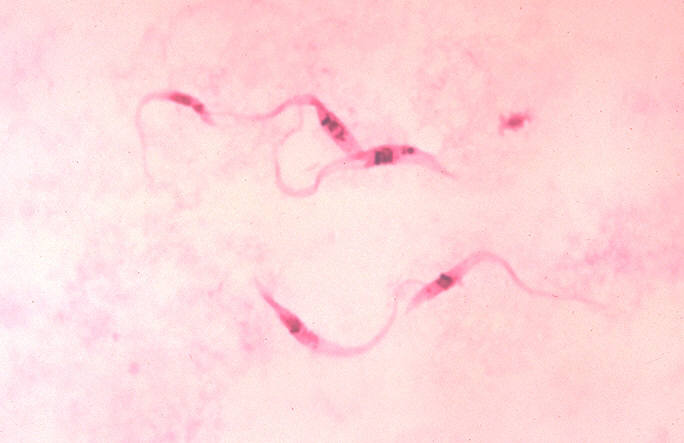Trypanosome
| Trypanosomes | ||||||||||||
|---|---|---|---|---|---|---|---|---|---|---|---|---|
 Trypanosoma cruzi parasites
| ||||||||||||
| Scientific classification | ||||||||||||
| ||||||||||||
| Genera | ||||||||||||
|
Blastocrithidia |
|
WikiDoc Resources for Trypanosome |
|
Articles |
|---|
|
Most recent articles on Trypanosome Most cited articles on Trypanosome |
|
Media |
|
Powerpoint slides on Trypanosome |
|
Evidence Based Medicine |
|
Clinical Trials |
|
Ongoing Trials on Trypanosome at Clinical Trials.gov Clinical Trials on Trypanosome at Google
|
|
Guidelines / Policies / Govt |
|
US National Guidelines Clearinghouse on Trypanosome
|
|
Books |
|
News |
|
Commentary |
|
Definitions |
|
Patient Resources / Community |
|
Patient resources on Trypanosome Discussion groups on Trypanosome Patient Handouts on Trypanosome Directions to Hospitals Treating Trypanosome Risk calculators and risk factors for Trypanosome
|
|
Healthcare Provider Resources |
|
Causes & Risk Factors for Trypanosome |
|
Continuing Medical Education (CME) |
|
International |
|
|
|
Business |
|
Experimental / Informatics |
Overview
Trypanosomes are a group of kinetoplastid protozoa distinguished by having only a single flagellum. All members are exclusively parasitic, found primarily in insects. A few genera have life-cycles involving a secondary host, which may be a vertebrate or a plant. These include several species that cause major diseases in humans.
The most notable trypanosomal diseases are trypanosomiasis (African Sleeping Sickness and South American Chagas Disease); these are caused by species of Trypanosoma. Leishmaniasis is a trypanosomal disease caused by species of Leishmania.
A variety of different forms appear in the life-cycles of trypanosomes, distinguished mainly by the position of the flagellum:
| Amastigote (leishmanial) | - reduced or absent |
| Promastigote (leptomonad) | - anterior of nucleus, free from cell body |
| Epimastigote (crithidial) | - anterior of nucleus, connected by a short undulating membrane |
| Opisthomastigote (herpetomonad) | - posterior of nucleus, passing through a long groove in the cell |
| Trypomastigote (trypanosomal) | - posterior of nucleus, connected by a long undulating membrane |
All trypanosomes have at least amastigote and promastigote stages. Trypanosoma appears in all five forms, with the trypanosomal stage occurring in the vertebrate host. Trypanosoma brucei sub-species have two forms in the bloodstream of a vertebrate host, the rapidly dividing long-slender form and the non-dividing short stumpy form. The short stumpy parasites are adapted for uptake into the tsetse fly vector, and are non-proliferative in comparison with the slender forms.
Unique to Trypansoma brucei is the expression of a variable surface glycoprotein (VSG) coat on the cell surface, which undergoes constant variation in order to evade the humoral immune system and host antibodies. It is thought that recombination from a repertoire of >1000 VSG genes is responsible for the vast diversity of the parasite, and its effectiveness in immune evasion.